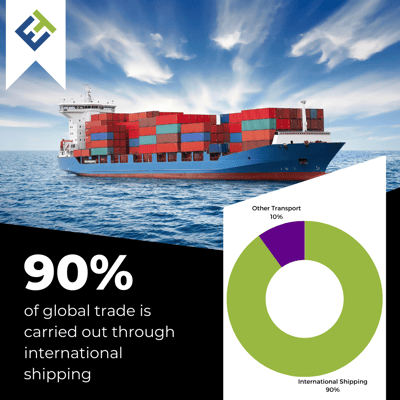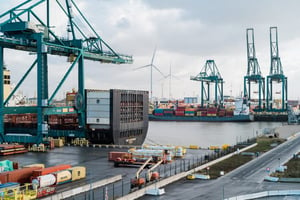The Significance of Port Decarbonisation
According to the IMO, approximately 90% of global trade is carried out through international shipping, with the vast majority of this trade passing through ports. This makes ports a crucial component in the fight against climate change, as they are both a source of emissions and a potential site for implementing decarbonisation measures. In recent years, there has been a growing awareness among port authorities and stakeholders of the need to reduce emissions from port activities, including vessel operations, cargo handling, and on-shore power generation.
One of the most effective ways to achieve port decarbonisation is through the adoption of zero and near-zero emission technologies and fuels. These include electric and hydrogen-powered cranes, trucks, and other equipment, as well as the use of renewable energy sources such as wind and solar power to generate electricity for port operations. In addition, there are a number of measures that can be taken to reduce emissions from vessel operations, such as the use of cleaner fuels, improved energy efficiency, and the adoption of low-carbon shipping technologies such as wind-assisted propulsion systems.

The Revised IMO GHG Strategy
The revised IMO GHG strategy, which was adopted at the Marine Environment Protection Committee (MEPC 80) in July 2021, represents a significant step forward in the fight against climate change. The strategy includes an enhanced common ambition to reach net-zero GHG emissions from international shipping close to 2050, a commitment to ensure an uptake of alternative zero and near-zero GHG fuels by 2030, as well as indicative check-points for 2030 and 2040.
The strategy also includes a range of short-term measures that are aimed at reducing emissions from existing vessels. These measures include the implementation of speed reduction initiatives, the use of energy-efficient technologies, and the optimisation of vessel routing to reduce fuel consumption. In addition, the strategy calls for the development of a global data collection system for fuel consumption and emissions from ships, which will enable the IMO to better monitor progress towards its decarbonisation goals.
Progress towards Port Decarbonisation
Since the adoption of the revised IMO GHG strategy, there has been a growing momentum towards port decarbonisation. A number of ports around the world have already taken steps towards reducing their emissions, including the Port of Detroit which has a goal of reaching net zero by 2040, the Port of Antwerp in Belgium, which has set a goal to become a zero-emission port by 2050, and the Port of Los Angeles in the United States, which has implemented a range of measures to reduce emissions from cargo handling operations.
In addition, many leading shipping companies have made commitments to reduce their emissions, with some setting targets to achieve net-zero emissions by 2050 or earlier. This includes companies such as Maersk, CMA CGM, and MSC, which together account for a significant share of global shipping activity.
Conclusion
The IMO’s revised GHG strategy represents a significant milestone in the fight against climate change, and its focus on port decarbonisation is particularly noteworthy. Ports play a critical role in the global shipping industry, and their decarbonisation is essential if we are to achieve the IMO’s ambitious goal of net-zero emissions from international shipping by 2050. While there is still much work to be done, there are already many examples of ports and shipping companies taking concrete steps towards reducing their emissions. By working together, we can ensure a sustainable future for the maritime industry and the planet as a whole.
LEARN MORE ABOUT PORT DECARBONISATION
Check out #PortOfTomorrow for information of a live project.



